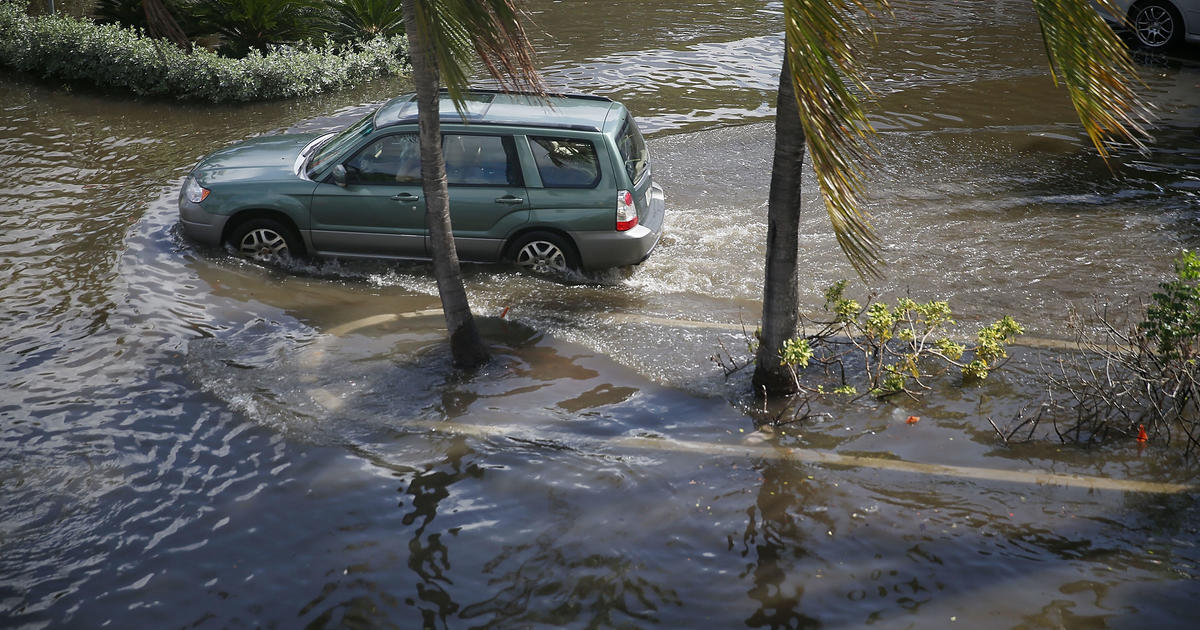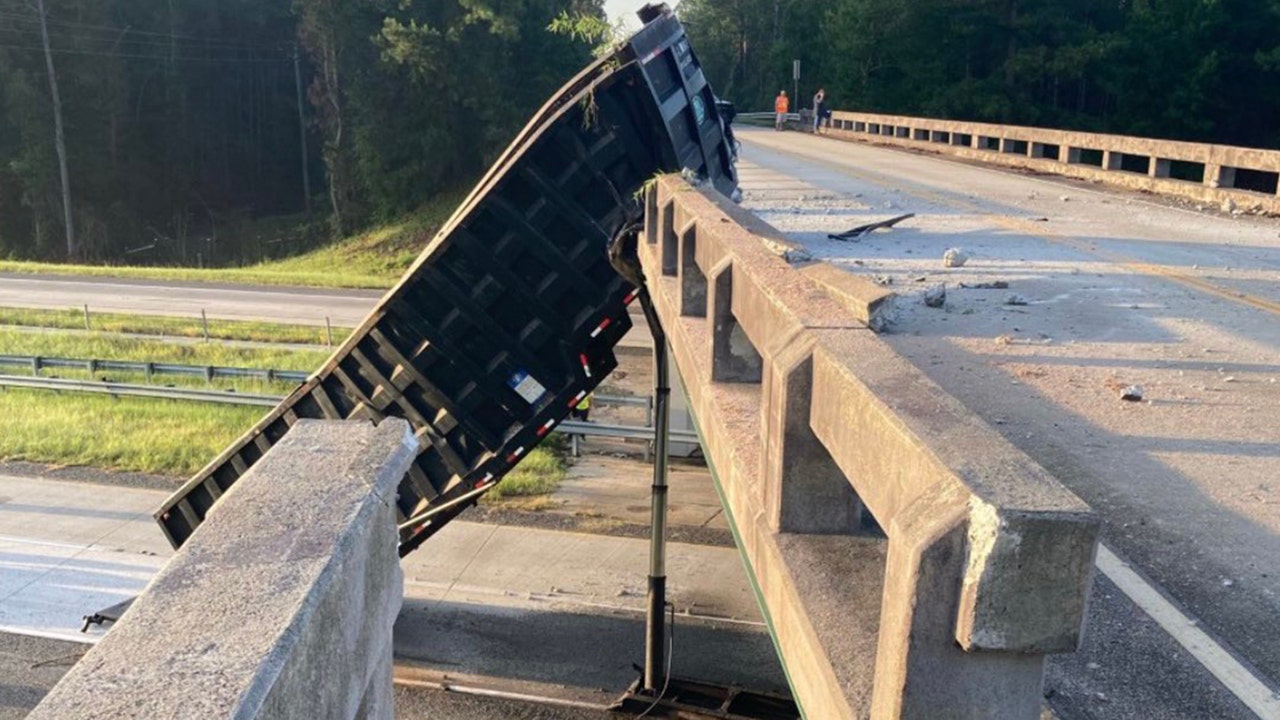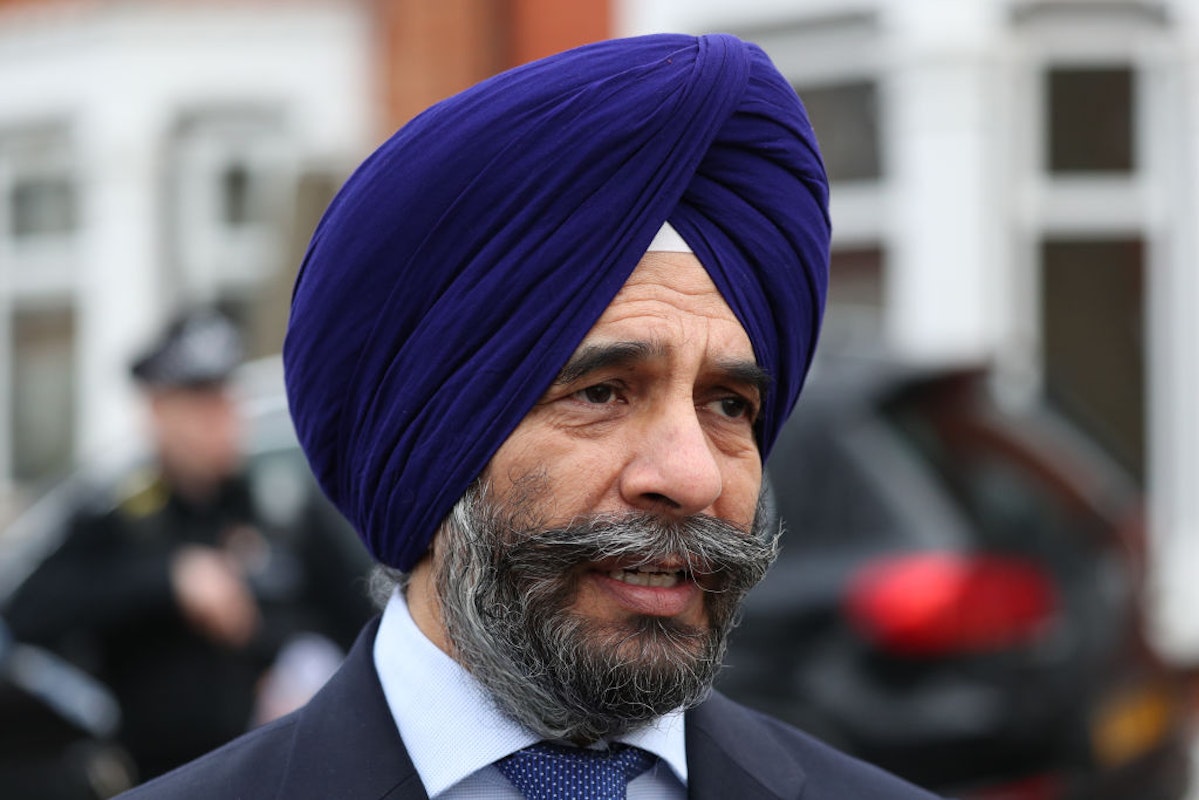You are using an out of date browser. It may not display this or other websites correctly.
You should upgrade or use an alternative browser.
You should upgrade or use an alternative browser.
In The News...
- Thread starter MasterBlaster
- Start date
- Replies 13K
- Views 1M
More options
Who Replied?CurSedVoyce
California Hillbilly
BeerGeek
Tree Numbnutz
Need the facepalm gif in the like emojis for that one.

Opinion | What Western Society Can Learn From Indigenous Communities (Published 2021)
The scientific method is designed to be indifferent to morals or values, but “Indigenous knowledge puts them back in.”
pantheraba
More biners!!!
FBI...a friend of mine named his home wifi "FBI Van"...that's what pops up on his neighbor's wifi connect list when they search. Pretty ingenious, I thought.
BlackSmith
Uncivil
I fear for rap’s rich and vibrant future...

 www.dailymail.co.uk
www.dailymail.co.uk

LA rapper Indian Red Boy is shot dead during Instagram Live
Zerail Rivera, who went by the name Indian Red Boy, was murdered in Hawthorne on July 8 at about 4.10pm while speaking to a friend on Instagram from inside his car.
CurSedVoyce
California Hillbilly
What the actual frig!?
BlackSmith
Uncivil
Get ready for the Moon Wobble Tax...

 www.cbsnews.com
www.cbsnews.com

NASA: Moon "wobble" in orbit may lead to record flooding on Earth
A wobble in the moon's orbit will raise high tides even higher, exacerbating the devastating effects of sea-level rise.
gf beranek
Old Schooler
Dynamic planet.
pantheraba
More biners!!!
Classic rescue. I was a lifeguard for years. This was done perfectly.


Video: Stow teen rescues mom and son during North Carolina vacation
The Stow-Munroe Falls High School graduate and Hiram College sophomore said he was pretty far out in the ocean when he noticed a mother and son struggling in the water.
fox8.com
FireFighterZero
Captain Zero!
Cant read your article Cory.
Steve Mack
Life Member.
Nearly two decades ago, when the New Zealand highway authority was planning the Waikato Expressway, people from the Māori tribe Ngāti Naho objected. The highway would encroach on an area that, in Māori tradition, was governed by a water-dwelling creature, a taniwha.
The authorities took those concerns into account and rerouted the road to circumvent the area in question. As a result, a year later, when the area was hit by a major flood, the road was unharmed.
“I’m still waiting for the headline, ‘Mythical Creature Saves the Taxpayer Millions,’” said Dan Hikuroa, a senior lecturer in Māori studies at the University of Auckland and member of the Ngāti Maniapoto tribe. He has often wondered if, once the flood hit, the technical team later said, “Why didn’t you just say it’s a flood risk area?”
Like many Indigenous peoples around the world, the Māori have developed their understanding of their environment through close observation of the landscape and its behaviors over the course of many generations. Now the New Zealand Environmental Protection Agency regularly looks for ways to integrate traditional Māori knowledge, or mātauranga, into its decision-making. Mr. Hikuroa has been appointed the culture commissioner for UNESCO New Zealand, a role he said is centered on integrating Māori knowledge into UNESCO’s work.
Western-trained researchers and governments are increasingly recognizing the wealth of knowledge that Indigenous communities have amassed to coexist with and protect their environments over hundreds or even thousands of years. Peer-reviewed scientific journals have published studies demonstrating that around the world, Indigenous-managed lands have far more biodiversity intact than other lands, even those set aside for conservation.
Embracing Indigenous knowledge, as New Zealand is trying to do, can improve how federal governments manage ecosystems and natural resources. It can also deepen Western scientists’ understanding of their own research, potentially, by providing alternative perspectives and approaches to understanding their field of work. This is ever more urgent, particularly as the climate crisis unfolds. “It is Indigenous resilience and worldview that every government, country and community can learn from, so that we manage our lands, waters and resources not just across budget years, but across generations,” U.S. Secretary of the Interior Deb Haaland, a citizen of the Laguna Pueblo in New Mexico and America’s first Native American cabinet secretary, said in remarks to the United Nations.
Indigenous scholars warn, though, that while traditional knowledge can be used to benefit the world, it can also be mishandled or exploited. Dominique David Chavez, a descendant of the Arawak Taíno in the Caribbean, and a research fellow at the Native Nations Institute at the University of Arizona and the National Science Foundation, says that, as Western scientists, “we are trained to go into communities, get that knowledge and go back to our institutions and disseminate it in academic journals.” That can be disruptive to traditional knowledge sharing, from one generation to another, she says, which should be the priority — ensuring that Indigenous knowledge systems are preserved in and supportive of the communities that developed them. In Puerto Rico, known by its Indigenous people as Borikén, Ms. Chavez is studying ways to restore the connections and traditional knowledge transmission patterns between elders and youth.
Bridging Indigenous and Western science also means respecting the ecosystem of values in which the knowledge systems are embedded. For instance, the practice of planting a diversity of crops and building healthy soil for water retention — today known as “regenerative agriculture” — has existed in Indigenous communities around the world throughout history. Yet the growing push to adopt regenerative agriculture practices elsewhere is often selective, using industrial pesticides, for example, or leaving out the well-being of people who farm the land.
“In Indigenous sciences, it’s not possible to separate the knowledge from the ethics of the responsibility for that knowledge — whereas in Western science, we do that all the time,” said Robin Wall Kimmerer, the director of the Center for Native Peoples and the Environment at the State University of New York in Syracuse and an enrolled member of the Citizen Potawatomi Nation. The scientific method is designed to be indifferent to morals or values, she adds. “Indigenous knowledge puts them back in.”
Editors’ Picks

Basketball Is Nothing Without Net

It Took Me a Long Time to Come Out as a ‘Plushie’ Lover

The Louvre’s Art Sleuth Is on the Hunt for Looted Paintings
Continue reading the main story
Ideally, the shared use of Indigenous knowledge can help mend broken relationships between Indigenous and Western communities.
In upstate New York, Ms. Kimmerer points to sweetgrass, a native plant used for traditional basketry. She was approached by a tribe concerned about the decline of the plant and looking for a solution.
Government regulations had already restricted its harvest. “One thing people often think about is, is it being overharvested?” Ms. Kimmerer said. She helped to conduct studies that ultimately showed that harvesting sweetgrass, following Indigenous protocols, is the very thing that will help it to thrive. “If you just leave it alone, it starts to decline.”

Image

Violet Lawson, a land owner in Kakadu, Australia, studies her land for the right time to set fires that are not too hot but still clear the underlying debris and fuel to prevent larger wildfires. The Australian government sees benefits in having Indigenous people look after their lands according to their traditional methods.Credit...Matthew Abbott for The New York Times
For her, that speaks to a core flaw in Western approaches to land management: the belief that human interaction is necessarily harmful to ecosystems. “That’s one of the reasons Native people were systematically removed from what are today’s national parks, because of this idea that people and nature can’t coexist in a good way.” But Indigenous knowledge, Ms. Kimmerer said, is really all about, ‘Oh yes we can, and we cultivate practices for how that is possible,’” she said.
While combating wildfires last year, Australian authorities turned to Aboriginal practices. While researchers have connected the severity of the fires to climate change, Ms. Kimmerer added that how Australia’s land has been managed in the modern era may have also played a role. Aboriginal people had “been managing that land in a fire landscape for millenniums, ” she said. “The fact that Indigenous science has been ignored is a contributing factor to the fires there.”
As the world increasingly recognizes the accomplishments of many Indigenous communities that successfully coexist with ecosystems, there is much for Western society to learn.
“We have this notion that Western science is the pathway to truth. We don’t really even entertain the possibility that it could come from somewhere else,” said Ms. Kimmerer. “Resource managers, land managers need to understand that there are multiple ways of knowing.”
Rachel Cernansky is a freelance journalist and the sustainability editor at Vogue Business. She writes frequently about the environment and social justice issues.
This article is part of Fixes, a series that explores solutions to major social problems. To receive email alerts for Fixes columns, sign up here.
The authorities took those concerns into account and rerouted the road to circumvent the area in question. As a result, a year later, when the area was hit by a major flood, the road was unharmed.
“I’m still waiting for the headline, ‘Mythical Creature Saves the Taxpayer Millions,’” said Dan Hikuroa, a senior lecturer in Māori studies at the University of Auckland and member of the Ngāti Maniapoto tribe. He has often wondered if, once the flood hit, the technical team later said, “Why didn’t you just say it’s a flood risk area?”
Like many Indigenous peoples around the world, the Māori have developed their understanding of their environment through close observation of the landscape and its behaviors over the course of many generations. Now the New Zealand Environmental Protection Agency regularly looks for ways to integrate traditional Māori knowledge, or mātauranga, into its decision-making. Mr. Hikuroa has been appointed the culture commissioner for UNESCO New Zealand, a role he said is centered on integrating Māori knowledge into UNESCO’s work.
Western-trained researchers and governments are increasingly recognizing the wealth of knowledge that Indigenous communities have amassed to coexist with and protect their environments over hundreds or even thousands of years. Peer-reviewed scientific journals have published studies demonstrating that around the world, Indigenous-managed lands have far more biodiversity intact than other lands, even those set aside for conservation.
Embracing Indigenous knowledge, as New Zealand is trying to do, can improve how federal governments manage ecosystems and natural resources. It can also deepen Western scientists’ understanding of their own research, potentially, by providing alternative perspectives and approaches to understanding their field of work. This is ever more urgent, particularly as the climate crisis unfolds. “It is Indigenous resilience and worldview that every government, country and community can learn from, so that we manage our lands, waters and resources not just across budget years, but across generations,” U.S. Secretary of the Interior Deb Haaland, a citizen of the Laguna Pueblo in New Mexico and America’s first Native American cabinet secretary, said in remarks to the United Nations.
Indigenous scholars warn, though, that while traditional knowledge can be used to benefit the world, it can also be mishandled or exploited. Dominique David Chavez, a descendant of the Arawak Taíno in the Caribbean, and a research fellow at the Native Nations Institute at the University of Arizona and the National Science Foundation, says that, as Western scientists, “we are trained to go into communities, get that knowledge and go back to our institutions and disseminate it in academic journals.” That can be disruptive to traditional knowledge sharing, from one generation to another, she says, which should be the priority — ensuring that Indigenous knowledge systems are preserved in and supportive of the communities that developed them. In Puerto Rico, known by its Indigenous people as Borikén, Ms. Chavez is studying ways to restore the connections and traditional knowledge transmission patterns between elders and youth.
Bridging Indigenous and Western science also means respecting the ecosystem of values in which the knowledge systems are embedded. For instance, the practice of planting a diversity of crops and building healthy soil for water retention — today known as “regenerative agriculture” — has existed in Indigenous communities around the world throughout history. Yet the growing push to adopt regenerative agriculture practices elsewhere is often selective, using industrial pesticides, for example, or leaving out the well-being of people who farm the land.
“In Indigenous sciences, it’s not possible to separate the knowledge from the ethics of the responsibility for that knowledge — whereas in Western science, we do that all the time,” said Robin Wall Kimmerer, the director of the Center for Native Peoples and the Environment at the State University of New York in Syracuse and an enrolled member of the Citizen Potawatomi Nation. The scientific method is designed to be indifferent to morals or values, she adds. “Indigenous knowledge puts them back in.”
Editors’ Picks

Basketball Is Nothing Without Net

It Took Me a Long Time to Come Out as a ‘Plushie’ Lover

The Louvre’s Art Sleuth Is on the Hunt for Looted Paintings
Continue reading the main story
Ideally, the shared use of Indigenous knowledge can help mend broken relationships between Indigenous and Western communities.
In upstate New York, Ms. Kimmerer points to sweetgrass, a native plant used for traditional basketry. She was approached by a tribe concerned about the decline of the plant and looking for a solution.
Government regulations had already restricted its harvest. “One thing people often think about is, is it being overharvested?” Ms. Kimmerer said. She helped to conduct studies that ultimately showed that harvesting sweetgrass, following Indigenous protocols, is the very thing that will help it to thrive. “If you just leave it alone, it starts to decline.”

Image

Violet Lawson, a land owner in Kakadu, Australia, studies her land for the right time to set fires that are not too hot but still clear the underlying debris and fuel to prevent larger wildfires. The Australian government sees benefits in having Indigenous people look after their lands according to their traditional methods.Credit...Matthew Abbott for The New York Times
For her, that speaks to a core flaw in Western approaches to land management: the belief that human interaction is necessarily harmful to ecosystems. “That’s one of the reasons Native people were systematically removed from what are today’s national parks, because of this idea that people and nature can’t coexist in a good way.” But Indigenous knowledge, Ms. Kimmerer said, is really all about, ‘Oh yes we can, and we cultivate practices for how that is possible,’” she said.
While combating wildfires last year, Australian authorities turned to Aboriginal practices. While researchers have connected the severity of the fires to climate change, Ms. Kimmerer added that how Australia’s land has been managed in the modern era may have also played a role. Aboriginal people had “been managing that land in a fire landscape for millenniums, ” she said. “The fact that Indigenous science has been ignored is a contributing factor to the fires there.”
As the world increasingly recognizes the accomplishments of many Indigenous communities that successfully coexist with ecosystems, there is much for Western society to learn.
“We have this notion that Western science is the pathway to truth. We don’t really even entertain the possibility that it could come from somewhere else,” said Ms. Kimmerer. “Resource managers, land managers need to understand that there are multiple ways of knowing.”
Rachel Cernansky is a freelance journalist and the sustainability editor at Vogue Business. She writes frequently about the environment and social justice issues.
This article is part of Fixes, a series that explores solutions to major social problems. To receive email alerts for Fixes columns, sign up here.
CurSedVoyce
California Hillbilly
Steve Mack
Life Member.
South Africa to deploy 25,000 soldiers to deal with looting and riots
South Africa is increasing by tenfold the number of troops deployed to combat widespread violence sparked by the imprisonment of former president Jacob Zuma.
Steve Mack
Life Member.
This reminded me of Justin's little accident. His was nowhere near as bad though.

 www.foxnews.com
www.foxnews.com




Dump truck hits bridge so hard it moves 6 feet
A dump truck trailer hit an overpass in Georgia on Thursday and moved it six feet. The damaged bridge caused the closure of Interstate 16, a major artery between Macon and Savannah.



Tear down and rebuild I'm sure; at least the deck and beams. If I had to guess, they'll remove the deck, and at least replace the beam that was hit, but I think all the beams are more likely. Inspect the abutments/pier, and it they check out, replace the deck.
kevin bingham
TreeHouser
- Joined
- Nov 10, 2010
- Messages
- 4,788
just drive a truck into it from the other way.
BlackSmith
Uncivil
Top Men...


FBI agent in Whitmer kidnap case arrested following domestic incident
The arrest of FBI Special Agent Richard Trask comes as defense lawyers have leveled a broader attack on the foundation of a high-profile case.
www.detroitnews.com
Similar threads
- Replies
- 55
- Views
- 8K




